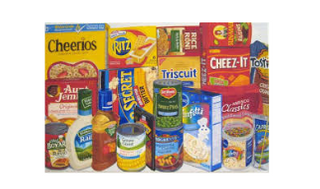In a nutshell, processed food has a bad reputation. Processed food is blamed for the cancer, allergies, the obesity epidemic, high blood pressure, Diabetes, and other negative health outcomes.
The question is what is your definition of “processed foods”?
Some think purchasing organic, eating raw vegetables, and/or going vegan (no meat, poultry, fish, dairy or eggs) is the all natural path and is the way to eliminate processed foods from their diet… what do you think?
Types of Processed Foods
Processed foods fall into a spectrum from minimal to heavily processed. Hence, all food is processed to some degree. Here is the general breakdown:
- Minimally processed foods: Examples include bagged spinach, cut vegetables, roasted nuts. These items are simply pre-packaged for convenience
- Foods processed at their peak to lock in nutritional quality and freshness include canned beans (Yes canned beans!), tomatoes, frozen fruits and vegetables (Yes even the olive colored green beans and sweet peas), and canned tuna. Select the no added salt version or simply drain and rinse
- Foods with ingredients for added flavor and texture (sweeteners, spices, oils, colors and preservatives) include jarred past sauce, salad dressing, yogurt and cake mixes
- The ever popular “Ready-to-eat foods” , which are highly processed like crackers, granola, and deli meat
- The most heavily processed foods are often frozen or pre-made such as frozen microwavable meals, frozen pizza, meals in a box or can
Are all processed foods bad?
Absolutely not. Milk is fortified with calcium and vitamin D. Some juices (like Orange Juice) are a fortified with calcium and vitamin D and benefit those who are truly lactose intolerant. Many breakfast cereals are fortified with fiber. Canned fruit (packed in water or its own juice) is a good option when fresh fruit is not available. (Yes canned fruit is a nutritious option). Some minimally processed food like pre-cut vegetables are quality convenience foods for busy people. For many, this convenience is the only way to get vegetables in each day.
At the end of the day, read the label. Read the ingredients. Not every food in a box or can is highly processed. Also, canned vegetables and/or fruit have the same nutritional value as fresh or frozen!
Look for Hidden Sugar, Sodium and Fat
Just because a product says “organic” or “Natural” does not mean it is better and healthier. Contrary to popular belief, high-fructose corn syrup is not evil. Sugar comes under many different names. Shop for no added salt versions of foods. Again read the label, “low sodium” or “reduced sodium” may still be high in sodium content. Added fat or Trans fat makes food shelf stable and gives it body. Trans fat also raises our bad cholesterol and lowers our good cholesterol. A product can still claim it has zero trans fats if each serving has less than half a gram of the fat. Therefore, if you eat three and four servings, this adds up quickly.
Summary
In a nutshell, too much of anything may have negative effects including vegetables. Learn to accurately read food labels and eat/drink in moderation.


